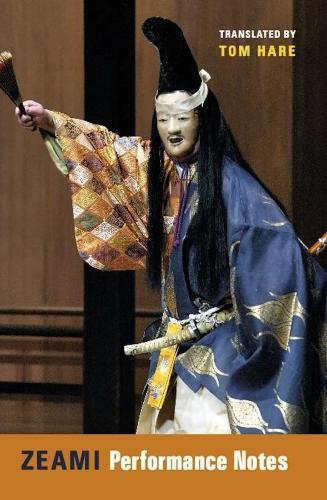Full Product Details
Author: Motoyiko Zeami ,
Tom Hare
Publisher: Columbia University Press
Imprint: Columbia University Press
Dimensions:
Width: 15.60cm
, Height: 2.80cm
, Length: 23.50cm
Weight: 0.723kg
ISBN: 9780231139595
ISBN 10: 0231139594
Pages: 528
Publication Date: 19 July 2011
Audience:
Professional and scholarly
,
Professional & Vocational
Format: Paperback
Publisher's Status: Active
Availability: Available To Order

We have confirmation that this item is in stock with the supplier. It will be ordered in for you and dispatched immediately.
Language: Japanese
Reviews
[Hare's] detailed, thorough, scholarly volume will no doubt serve as the choice for those seeking an in-depth understanding of Zeami... Highly recommended. -- CHOICE The translations are clear and straightforward. -- Joni Koehn, Asian Theatre Journal this volume will have a great impact on noh scholarship and allow for a better understanding of Zeami's place in medieval culture. -- Eric C. Rath, Monumenta Nipponica
Thomas Hare is a highly gifted, graceful, and imaginative translator. Building on his previous masterful work in Zeami's Style: The Noh Plays of Zeami Motokiyo, he has brought Zeami's notes to life in English with great immediacy and verve. Zeami's 'performance notes' became public only in the twentieth century, having been written for his closest associates and artistic heirs and then kept as the tightly guarded property of successor performance lineages. The texts can, most obviously, be read as a window into Zeami's own thoughts, as his legacy and strategic guide for his immediate followers. They make it possible to reimagine a remarkable amount about performance practice in Zeami's day, and they are also of great interest as a window into the matter of writing itself in Zeami's time. The texts vary in the degree to which Zeami uses a consciously elevated style, writing in a sort of pseudo-Chinese. His use of terminology borrowed, adapted, expanded, or distorted from other discourses of his time, notably the discourses of poetry and of Buddhism, is fascinating as a study in its own right. -- Susan Matisoff, emerita professor of East Asian languages and cultures, University of California, Berkeley [Hare's] detailed, thorough, scholarly volume will no doubt serve as the choice for those seeking an in-depth understanding of Zeami... Highly recommended. CHOICE Vol. 46, No. 01 The translations are clear and straightforward. -- Joni Koehn Asian Theatre Journal Vol 26, No 1 this volume will have a great impact on noh scholarship and allow for a better understanding of Zeami's place in medieval culture. -- Eric C. Rath Monumenta Nipponica Vol 64, no 2, 2009
Thomas Hare is a highly gifted, graceful, and imaginative translator. Building on his previous masterful work in Zeami's Style: The Noh Plays of Zeami Motokiyo, he has brought Zeami's notes to life in English with great immediacy and verve. Zeami's 'performance notes' became public only in the twentieth century, having been written for his closest associates and artistic heirs and then kept as the tightly guarded property of successor performance lineages. The texts can, most obviously, be read as a window into Zeami's own thoughts, as his legacy and strategic guide for his immediate followers. They make it possible to reimagine a remarkable amount about performance practice in Zeami's day, and they are also of great interest as a window into the matter of writing itself in Zeami's time. The texts vary in the degree to which Zeami uses a consciously elevated style, writing in a sort of pseudo-Chinese. His use of terminology borrowed, adapted, expanded, or distorted from other discourses of his time, notably the discourses of poetry and of Buddhism, is fascinating as a study in its own right. -- Susan Matisoff, emerita professor of East Asian languages and cultures, University of California, Berkeley [Hare's] detailed, thorough, scholarly volume will no doubt serve as the choice for those seeking an in-depth understanding of Zeami... Highly recommended. CHOICE The translations are clear and straightforward. -- Joni Koehn Asian Theatre Journal this volume will have a great impact on noh scholarship and allow for a better understanding of Zeami's place in medieval culture. -- Eric C. Rath Monumenta Nipponica
Author Information
Tom Hare is William Sauter LaPorte '28 Professor of Regional Studies in the Department of Comparative Literature at Princeton University. His most recent books are Zeami's Style: The Noh Plays of Zeami Motokiyo and ReMembering Osiris: Number, Gender, and the Word in Ancient Egyptian Representational Systems.



